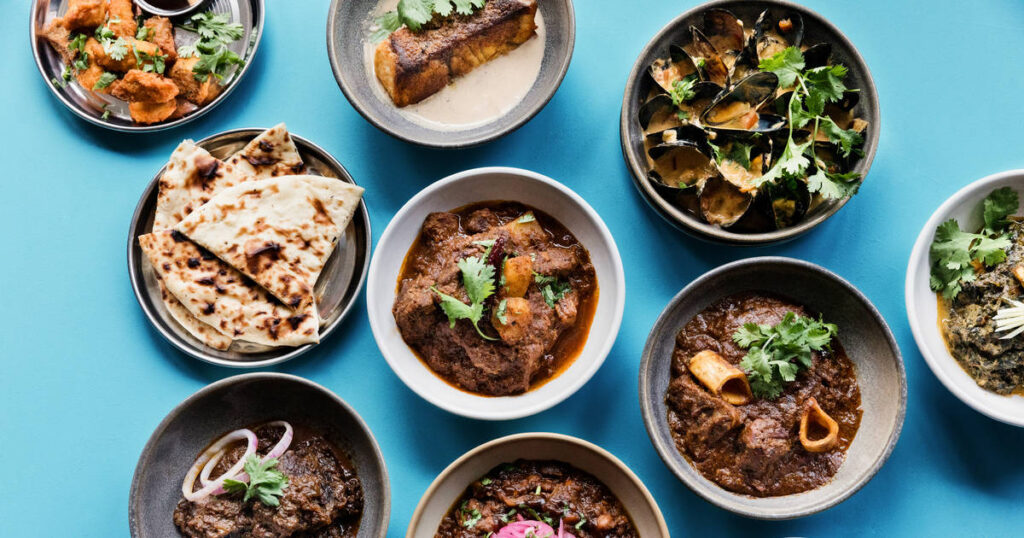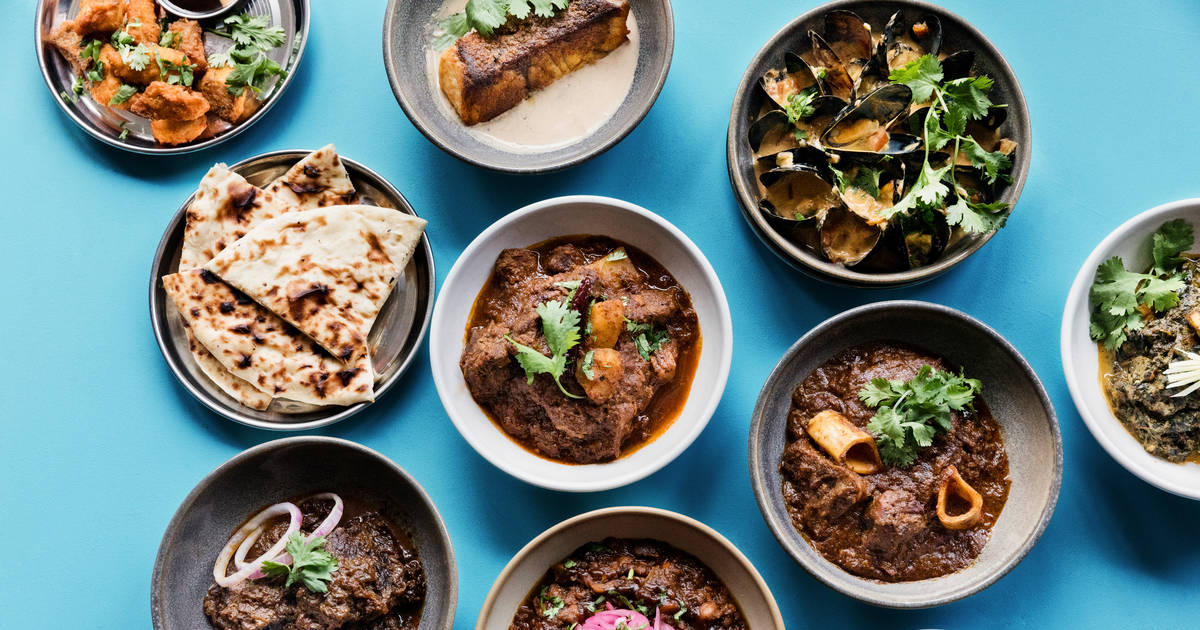
The Best Indian Food in Austin: A Culinary Journey
Craving authentic Indian cuisine in Austin? You’re in luck! Austin’s vibrant food scene boasts a diverse array of Indian restaurants, each offering a unique culinary experience. But with so many options, finding the best Indian food in Austin can feel overwhelming. This comprehensive guide cuts through the noise, providing you with expert recommendations and in-depth reviews to satisfy your cravings. We’ve explored the city, sampled countless dishes, and consulted with local foodies to bring you this definitive list of the top Indian restaurants in Austin. Get ready to embark on a flavorful adventure!
Why Austin’s Indian Food Scene is Thriving
Austin’s diverse culinary landscape has embraced Indian cuisine, leading to a thriving and competitive market. This competition benefits diners, as restaurants constantly strive to improve their offerings, innovate with new dishes, and provide exceptional service. The influx of a diverse population into Austin has further fueled the demand for authentic and flavorful Indian food. This section will explain why the best Indian food in Austin is so sought after.
The Evolution of Indian Cuisine in Austin
From humble beginnings to a prominent position in Austin’s culinary scene, Indian restaurants have evolved significantly. Early establishments focused on traditional dishes, while newer restaurants are experimenting with fusion cuisine and modern interpretations. This evolution reflects the changing tastes of Austin diners and the growing appreciation for Indian flavors.
Factors Contributing to Quality Indian Food
Several factors contribute to the quality of Indian food. Fresh, high-quality ingredients are essential, as are authentic recipes and skilled chefs. Proper spice blending and cooking techniques are also crucial for creating flavorful and aromatic dishes. A commitment to customer service and a welcoming atmosphere further enhance the dining experience.
Top Indian Restaurants in Austin: Our Expert Picks
Based on our extensive research and taste tests, these are our top picks for the best Indian food in Austin. We’ve considered factors such as food quality, service, ambiance, and value for money.
G’Raj Mahal
G’Raj Mahal is a food truck turned brick and mortar restaurant known for its flavorful curries and authentic Indian dishes. They offer a wide variety of vegetarian and non-vegetarian options, all made with fresh ingredients and expertly blended spices. Their butter chicken and lamb vindaloo are particularly popular.
Clay Pit
Clay Pit has been a staple of the Austin Indian food scene for years. Located in a historic building, it offers a sophisticated dining experience with a menu featuring classic Indian dishes and innovative creations. Their tandoori dishes and biryanis are highly recommended.
Asiana Indian Cuisine
Asiana Indian Cuisine is a popular spot for its lunch buffet and extensive menu. They offer a wide variety of dishes from different regions of India, catering to a wide range of tastes. Their palak paneer and chicken tikka masala are consistently praised.
Bombay Dhaba
Bombay Dhaba offers authentic street style Indian food with a modern twist. They are known for their flavorful curries, biryanis and tandoori dishes. The restaurant is a great place to enjoy delicious and authentic Indian food.
Spice Route
Spice Route offers a modern take on traditional Indian cuisine, with a focus on using fresh, local ingredients. Their menu features creative dishes and innovative interpretations of classic favorites. Their seafood dishes and vegetarian options are particularly noteworthy.
Understanding the Flavors of Indian Cuisine
Indian cuisine is renowned for its complex and aromatic flavors. Understanding the key spices and ingredients used in Indian cooking can enhance your appreciation for the dishes. This section provides an overview of the essential elements of Indian cuisine.
The Importance of Spices
Spices are the heart and soul of Indian cuisine. They add depth, complexity, and aroma to dishes. Common spices used in Indian cooking include turmeric, cumin, coriander, cardamom, ginger, garlic, and chili peppers. The skillful blending of these spices is essential for creating authentic Indian flavors.
Essential Ingredients
Besides spices, several other ingredients are essential in Indian cuisine. These include rice, lentils, vegetables, yogurt, and ghee (clarified butter). These ingredients provide the foundation for many Indian dishes and contribute to their unique textures and flavors.
Regional Variations
Indian cuisine varies significantly from region to region. North Indian cuisine is known for its rich curries and tandoori dishes, while South Indian cuisine features lighter dishes made with rice, lentils, and coconut milk. East Indian cuisine is influenced by Chinese and Southeast Asian flavors, while West Indian cuisine is known for its seafood dishes and vegetarian options.
A Closer Look at Popular Indian Dishes
To help you navigate the menu at Indian restaurants, here’s a closer look at some popular dishes:
Butter Chicken
Butter chicken is a creamy and flavorful curry made with tandoori chicken, tomatoes, butter, and cream. It’s a popular choice for those who prefer milder flavors.
Chicken Tikka Masala
Chicken tikka masala is another popular curry made with tandoori chicken, tomatoes, onions, and a blend of spices. It’s known for its rich and savory flavor.
Palak Paneer
Palak paneer is a vegetarian dish made with spinach and paneer (Indian cheese). It’s a healthy and flavorful option that’s popular with vegetarians and non-vegetarians alike.
Biryani
Biryani is a rice dish made with meat or vegetables, spices, and herbs. It’s a flavorful and aromatic dish that’s often served at special occasions.
Samosas
Samosas are deep-fried pastries filled with potatoes, peas, and spices. They’re a popular snack or appetizer.
The Art of Spice Blending: A Deep Dive
Spice blending is a crucial skill in Indian cooking. The right combination of spices can elevate a dish from ordinary to extraordinary. This section explores the art of spice blending and provides tips for creating your own spice blends.
Understanding Spice Profiles
Each spice has a unique flavor profile that contributes to the overall taste of the dish. Some spices are warm and earthy, while others are sweet and aromatic. Understanding these profiles is essential for creating balanced and flavorful spice blends.
Creating Your Own Blends
Experimenting with different spice combinations is a great way to discover new flavors. Start with a base of common spices like turmeric, cumin, and coriander, and then add other spices to create your own unique blends. Be sure to taste as you go and adjust the spices to your liking.
Tips for Storing Spices
Proper storage is essential for maintaining the flavor and aroma of spices. Store spices in airtight containers in a cool, dark place. Avoid storing spices near heat or moisture, as this can cause them to lose their potency.
Navigating the Menu: Tips for Ordering Indian Food
Ordering Indian food can be daunting, especially if you’re not familiar with the dishes. Here are some tips to help you navigate the menu and make informed choices:
Ask Questions
Don’t be afraid to ask your server questions about the dishes. They can provide recommendations and help you choose dishes that suit your tastes.
Consider Spice Levels
Indian food can range from mild to very spicy. Be sure to ask about the spice level of each dish before ordering. If you’re not used to spicy food, start with milder options.
Try a Variety of Dishes
Indian cuisine offers a wide variety of dishes, so don’t be afraid to try something new. Order a few different dishes to share with your friends or family.
The Health Benefits of Indian Cuisine
Indian cuisine is not only delicious but also offers several health benefits. Many Indian dishes are rich in antioxidants, vitamins, and minerals. The use of spices like turmeric and ginger also provides anti-inflammatory and digestive benefits.
Antioxidant-Rich Spices
Many Indian spices, such as turmeric, cumin, and coriander, are rich in antioxidants. Antioxidants help protect the body from damage caused by free radicals, which can contribute to chronic diseases.
Digestive Benefits
Spices like ginger and cumin have been shown to aid digestion. They can help reduce bloating, gas, and other digestive issues.
Vegetarian Options
Indian cuisine offers a wide variety of vegetarian options. These dishes are often rich in protein, fiber, and other essential nutrients.
Beyond the Plate: Experiencing Indian Culture in Austin
Austin offers several opportunities to experience Indian culture beyond the plate. From cultural festivals to dance performances, there are many ways to immerse yourself in the rich traditions of India.
Indian Cultural Festivals
Austin hosts several Indian cultural festivals throughout the year. These festivals feature traditional music, dance, food, and crafts.
Indian Dance Performances
Several dance companies in Austin perform classical and contemporary Indian dance. These performances offer a glimpse into the beauty and grace of Indian culture.
Indian Grocery Stores
Visiting an Indian grocery store is a great way to explore the ingredients and spices used in Indian cooking. You can find a wide variety of products from different regions of India.
Q&A: Your Burning Questions About Indian Food Answered
- What’s the difference between tikka masala and butter chicken? Both use tandoori chicken, but butter chicken is richer and creamier, while tikka masala has a more complex spice profile.
- Is all Indian food spicy? No, spice levels vary greatly. Many dishes are mild and flavorful without being overly spicy. Always ask about the spice level before ordering.
- What are some good vegetarian options? Palak paneer, dal makhani, vegetable biryani, and chana masala are all excellent choices.
- What’s the best way to order for a group? Order a variety of dishes to share, including appetizers, entrees, and sides. This allows everyone to try different flavors.
- What’s the difference between naan and roti? Naan is a leavened bread cooked in a tandoor oven, while roti is an unleavened flatbread cooked on a griddle.
- What drinks pair well with Indian food? Lassi (a yogurt-based drink), mango juice, and beer are all good choices.
- How do I handle the spice if a dish is too hot? Yogurt, milk, or rice can help cool down your mouth. Avoid drinking water, as it can spread the spice.
- Are there gluten-free options available? Yes, many Indian restaurants offer gluten-free options. Look for dishes made with rice flour or lentils.
- What’s the best way to reheat Indian food? Reheat curries on the stovetop over medium heat, adding a little water if needed. Reheat rice in the microwave with a damp paper towel.
- Where can I find the most authentic Indian food in Austin? While authenticity is subjective, G’Raj Mahal, Clay Pit, and Asiana Indian Cuisine are often cited as having the most authentic flavors.
Conclusion: Savoring the Best Indian Food in Austin
Austin’s Indian food scene offers a diverse and flavorful culinary experience. From traditional curries to innovative fusion dishes, there’s something for everyone to enjoy. We hope this guide has helped you discover some of the best Indian food in Austin. Now, go out and explore the city’s vibrant Indian restaurants and savor the delicious flavors of India!
Share your favorite Indian restaurants in Austin in the comments below!

